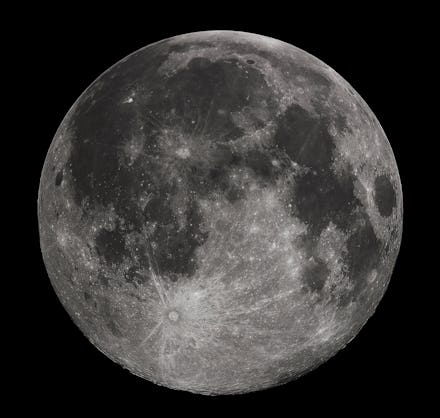We may refuel spacecrafts on the way to Mars. Here's how a lunar gas station might work.

Space travel is difficult. A group of students, ranging from undergraduates to Ph.D. candidates, are working to make it easier. They want to build a gas station in outer space so that spacecrafts no longer have to launch carrying fuel supplies meant to last for an entire mission.
The students, all participants in the 2017 Caltech Space Challenge in California, came up with their proposal for a lunar "supply station" at a time when the world seems to have a revived fervor about reaching the moon. The world has been interested in the moon long before the United States first landed there in 1969, and now it's seen as a critical part of the U.S. mission to send humans to Mars, which the Trump Administration instructed NASA to do by 2033. NASA is already working on a moon-orbiting station as its first step.
But right now, as the Caltech Space Challenge points out, spacecrafts are required to carry all the fuel they need for a mission when they leave Earth, which both weighs down rockets and requires a lot of energy during launch.
"The amount of energy it takes to get into orbit from Earth is far more than it even takes [to get] from orbit to Mars," Samuel Wald, part of the group and a Ph.D. student studying aeronautics and astronautics at MIT, said in an interview. "By increasing the velocity of the rocket a little bit, you will grow the amount of propellant you need by a lot. It's a well-known problem."
Refueling in orbit would allow for rockets to bring "more people or cargo or scientific equipment into orbit," the students wrote on Live Science.
Here's how that might work
Part of the moon's appeal comes from its massive supply of ice, which can basically be converted into rocket fuel. The students argue that they can still use solar-powered rovers to find and mine ice on the moon, even in dark craters that are absent of sunshine — they believe that installing mirrors on a crater's rim would keep the rovers running. Should their plan ever be green-lit, they imagine a future where there are multiple "small robotic moon bases" where ice is mined, converted to liquid propellant (fuel) and delivered to spacecrafts using "lunar resupply shuttles."
"The [Lunar Resupply Shuttles] would burn moon-made fuel and would have advanced guidance and navigation systems to travel between lunar bases and their target spacecraft," the students wrote on Live Science. If that works, they suggest taking things a step further and build a gas station that centralizes the whole process. The gas station would receive ice deliveries directly from the lunar resupply shuttles and convert them to fuel. Then, spacecrafts heading to Mars could stop by and fill up.
The idea of a lunar gas station isn't new — aerospace companies Lockheed Martin and Boeing are already planning one together under their joint venture, The United Launch Alliance. However, students at the Caltech Space Challenge focused on the details of how it could work.
There's plenty of research that still needs to be done to execute a plan like this, Wald said. Though it was based based on existing work, there's no knowing how things would actually play out in space.
"None of it has been tested on the moon yet," he said.
Yet, with this much interested drummed up around the idea, it seems possible that stopping for gas can become an extraterrestrial norm in the near future.
"The exciting part is being able to use the moon really as a true stepping stone on the way to Mars and to get people thinking about these long-term investments instead of one-off, flag-and-footprint missions," Wald said.